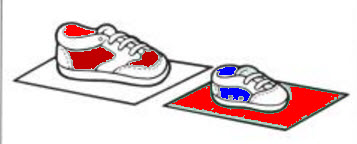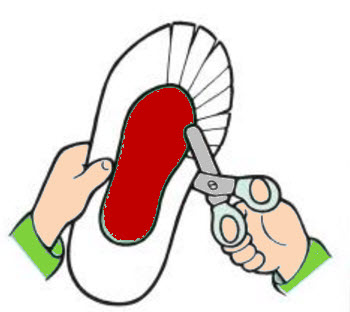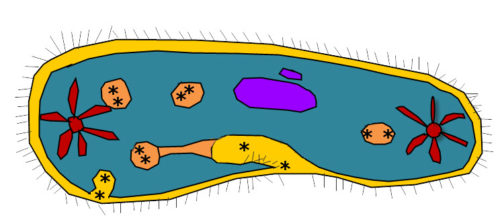Pond water has some living creatures that are so small they can be seen only with a microscope. Some of these creatures are made of only one cell, such as a paramecium. This tiny water critter is often called a “slipper animal” because it looks like the sole of a shoe.
Paramecium move around in their watery environment by fluttering hair-like structures called cilia that cover the outside of their bodies.
Following are instructions for making a paper model of a slipper animal. The white paper fringe represents the cilia. The glitter spot represents its control center, which is called the nucleus.
Slipper Animals
1. Set a large shoe on a sheet of white construction paper. Set a smaller shoe on green paper. Note: The shoes need to both be left or both right shoes. The diagram shows white and red paper, but any two colors may be used.
2. Draw around the sole of each shoe, then cut the sole shape from each piece of paper.
3. Cover the edge of the underside of the small paper sole with glue and place it in the center of the larger sole shape.
4. With the scissors, cut slits in the white paper extending from under the green sole shape. You want to make fringe around the entire edge of the white paper.
5. Pace a spot of glue about as large as a quarter in the center of the red sole.
6. Cover the spot of glue with glitter. This represents the nucleus or brain of the paramecium.
This paper model of a paramecium can be a reminder that while not visible, there are living organisms in pond and lake water. Thus, even if the water looks very clean, it is not always safe to drink.
Enrichment
Create your own paramecium model that represents more than the cilia and nucleus. For information about the different parts of a paramecium see
Paramecium Parts and Functions


